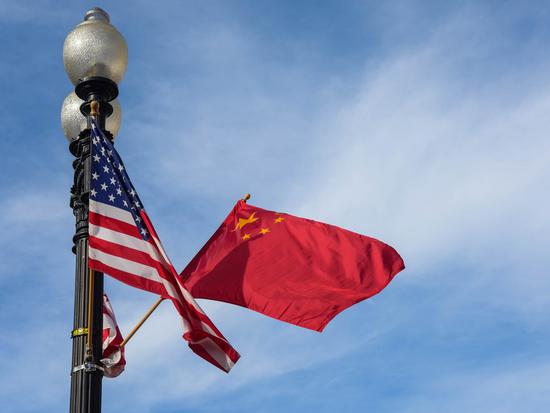U.S.-dominated IPEF lacks promise

Photo shows the flags of China and the U.S. (Photo from Xinhua)
By John Lee
(ECNS) -- The U.S. government on Sunday announced the launch of the Indo-Pacific Economic Framework (IPEF) in Tokyo, which is in fact an extension of the country’s “Indo-Pacific Strategy”, revealing its ulterior motives, that is, to set up a wider alliance to contain China.
Some U.S. politicians openly talked about suppressing China with regional economic influence. Not long ago, U.S. Trade Representative Katherine Tai said in an interview that the IPEF serves to “counter Chinese outreach in the region.”
This is proven by former U.S. President Obama’s strategy of advancing a rebalance toward Asia and the Pacific, Donald Trump’s “Indo-Pacific Strategy” and the improved “Indo-Pacific Strategy” by the current Biden administration.
And the IPEF attracting more partners in the Asia-pacific region on the pretext of “trade” in essence still serves the geopolitical interests of the U.S.
Although the Biden administration declared that the framework was not a free trade agreement (FTA), but a more relaxed and tailored arrangement, the lack of clear trade terms makes its prospects uncertain.
Analysts believe it is not easy for the IPEF to attract more participants because it doesn’t offer incentives to prospective partners by lowering tariffs or provide signatories with greater access to U.S. markets. On one hand, the U.S. forces its allies to join its side by coercion, while on the other hand, the country dreams to absorb more partners with rubber cheque to suppress China.
It preaches the goal of strengthening regional cooperation and promoting the opening and prosperity of the Asia-Pacific region, but the real motives behind this strategy it to build up a small bloc to incite geopolitical confrontation to exclude China from the industrial and value chains of the region and eventually isolate it.
The U.S. artificially decouples economic ties, which is bound to disrupt the originally stable supply chain network in the Asia-Pacific region, endanger the regional economy, along with the interests of relevant countries, thus leading to the failure of its scheme.
China is implementing the Regional Comprehensive Economic Partnership Agreement (RCEP) with high quality, actively building version 3.0 of the China-ASEAN Free Trade Area with ASEAN members, and continuously promoting its accession to the Comprehensive and Progressive Agreement for Trans-Pacific Partnership (CPTPP) and the Digital Economic Partnership Agreement (DEPA), thus providing a continuous impetus for the steady growth of global and regional economies.
China's free trade zone layout is expected to be further optimized in the future, with the country aiming to open its doors wider. The liberalization and facilitation of trade and investment between China and its free trade partners is conducive to strengthening global value chain cooperation and helping its partners achieve more stable and stronger economic growth.
Harmony and win-win cooperation are the mainstream in the Asia-Pacific region. As Chinese Foreign Minister Wang Yi said, China has no intention to engage in geopolitics, but only promote solidarity and cooperation sincerely. China has no intention to challenge any country, but only expect common development with regional countries. The one trying to use a framework to isolate China will eventually isolate itself.
